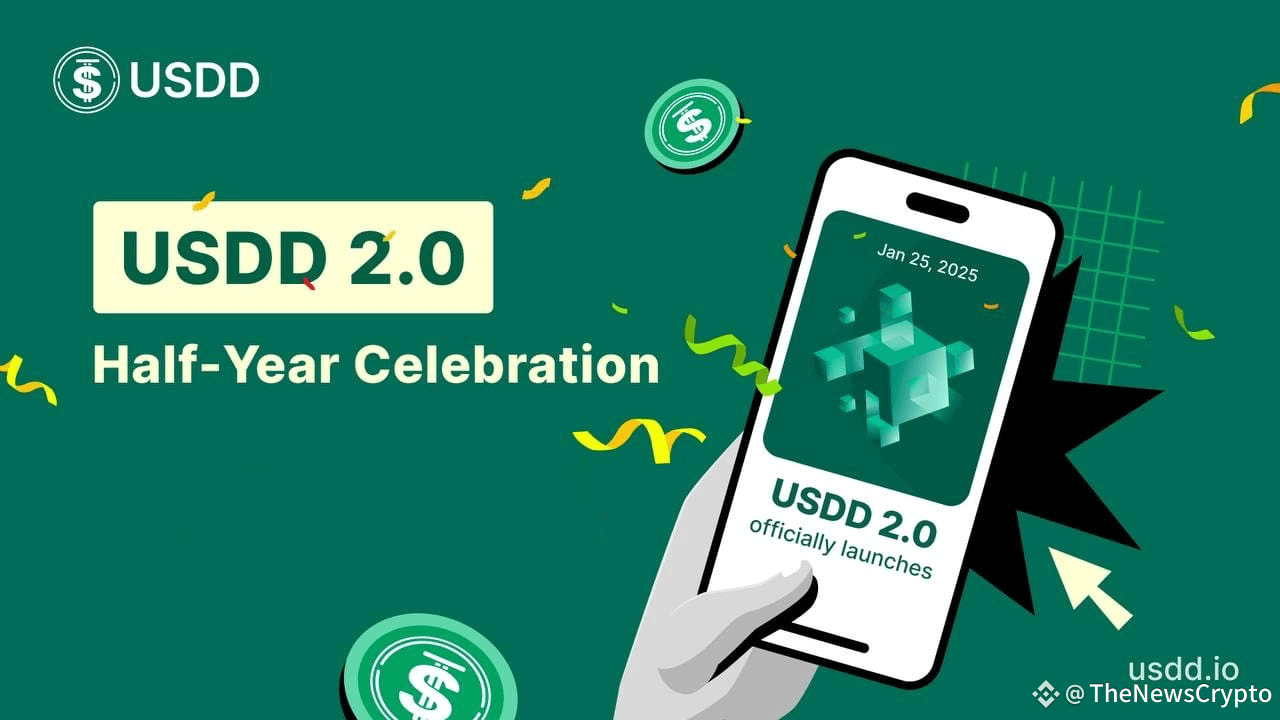 USDD 2.0’s six-month evolution demonstrates a shift towards design-driven architecture in stablecoins, featuring collateral management and the phasing out of legacy assets.
USDD 2.0’s six-month evolution demonstrates a shift towards design-driven architecture in stablecoins, featuring collateral management and the phasing out of legacy assets.
As global regulators accelerate efforts to define stablecoin legislation, decentralized alternatives are drawing renewed momentum.
Stablecoin activity has surged in 2025. Reports indicate that the total supply increased from $138 billion to over $250 billion in just one year. Monthly transfer volumes more than doubled to $4.1 trillion, while active wallets increased by 53%, reaching 30 million. Once seen as a marginal category, yield-generating stablecoins now account for nearly 4.5% of the circulating supply, up from just 1% a year earlier.
The expansion reflects a confluence of trends. Users are searching for yield amid low interest rates, seeking faster and cheaper cross-border payments, and growing reluctant to trust centralized issuers that retain the power to freeze assets. These dynamics have revived interest in decentralized, crypto-collateralized stablecoins like the US dollar-pegged Decentralized USD (USDD) as a potential alternative.
Still, challenges remain. Critics argue that most decentralized stablecoins either lack transparency, suffer from liquidity issues, or rely on unsustainable yield incentives that collapse under market pressure.
A new stablecoin architecture is emerging that combines decentralization, verifiable transparency, robust collateral buffers, and consistent utility in the decentralized finance (DeFi) space. With the launch of its 2.0 upgrade, USDD has begun aligning itself with a new class of stablecoin architecture — one that emphasizes sustainable growth, passive income generation and structural resilience. This model mirrors the strategic direction of MakerDAO’s SparkLend, a well-established platform known for pairing yield opportunities with robust protocol safeguards.
Building for Growth: Six Months of USDD 2.0
Rolled out in January 2025, the USDD 2.0 upgrade introduced a range of structural changes, including revamped collateral management, enhanced risk controls, and a new feature called Smart Allocator. As the protocol reaches its six-month milestone on July 25, the stablecoin’s evolution offers early insight into what a more sustainable, user-centric model for DeFi might look like.
One of the clearest signs of renewed momentum has been the steady growth in USDD’s circulating supply, which recently surpassed 500 million. This growth has been supported by new staking and vault products introduced as part of the 2.0 upgrade.
Among these new offerings, the 20% APY staking campaign played a notable role in attracting liquidity. The initiative employed time-locked incentives through dynamic yield strategies,
marking a shift from short-term incentives to longer-term, utility-aligned rewards.
Meanwhile, one of USDD’s primary yield-generation mechanisms, sTRX Vault, has reportedly surpassed $7 million in total value locked. The vault enables users to stake sTRX, a TRON-based staking derivative, in exchange for yield-bearing exposure while simultaneously strengthening the protocol’s collateral base. The growing adoption of the vault suggests a deeper alignment between USDD and TRON-native DeFi infrastructure.
Smart Allocator Enters the Picture
One of the core innovations in the upgrade is Smart Allocator — USDD’s investment strategy designed to produce sustainable yield. Capital from USDD’s cash reserve is deployed under the active monitoring of the USDD and JUST DAO teams. Through continuous analysis of market indicators such as volatility, liquidity and asset concentration, the strategy aims to maintain consistent yields while managing optimal risk exposure. The goal is to reduce dependence on external subsidies by generating sustainable yield through carefully managed, real-time capital deployment strategies.
For USDD, Smart Allocator plays a central role in the protocol’s transition toward long-term independence. Rather than relying on external support, the mechanism is designed to generate value internally by putting reserve capital to productive use. The goal is to maintain sustainable yields for users without exposing the system to excessive risk or opaque strategies.
Looking ahead, USDD’s roadmap includes plans to expand its native deployment across Ethereum and BNB Chain, alongside ongoing upgrades to its yield-generation strategy. These developments reflect a broader effort to enhance accessibility and strengthen core utility across networks.
Alongside protocol upgrades, USDD has expanded its payment integrations — including recent announcements with AEON Pay and Uquid — highlighting a growing emphasis on real-world utility. The team also continues to iterate on product development, adapting features in response to user feedback and market shifts.
As USDD moves past its 2.0 upgrade, the protocol is establishing a more comprehensive, self-sustaining stablecoin system focused on real yield, ecosystem growth and aligning incentives with users. Its trajectory indicates more than just responding to market trends — it reflects a long-term vision for resilient and transparent stablecoin infrastructure.
In an industry typically characterized by fleeting experiments and changing stories, USDD’s intentional shift toward sustainable growth stands out. If the protocol effectively implements its strategy, it could serve as a strong model for future decentralized stablecoins.


